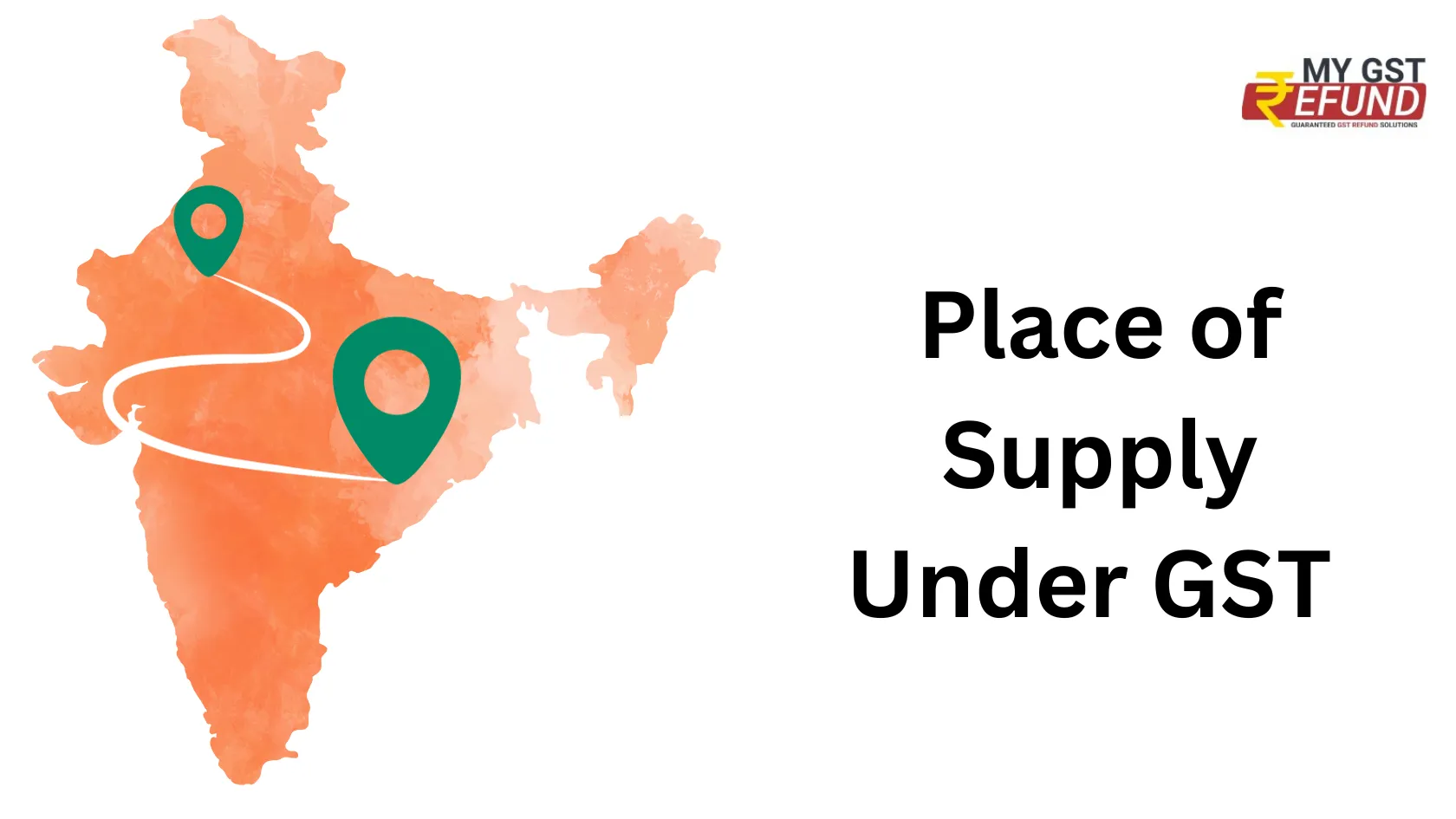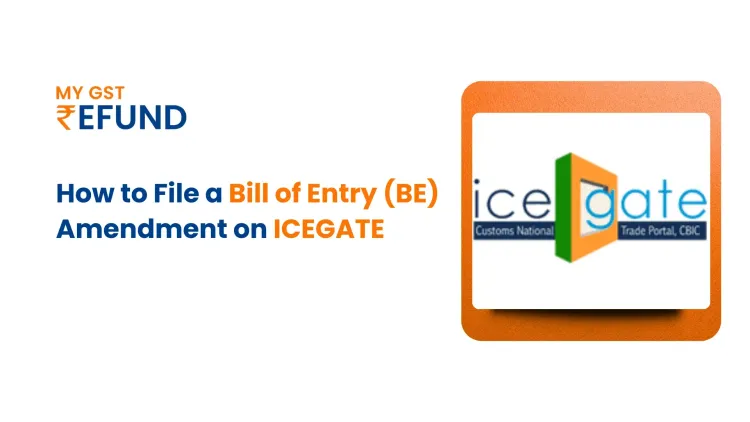Place of Supply in GST
Published on: Tue Oct 10 2023
The introduction of the Goods and Service Tax (GST) system has revolutionized the entire tax system of India by simplifying various tax processes. A key element of the GST framework is the concept of “Place of Supply” which determines the location where the transaction is deemed to have taken place for the taxation purpose.
GST is a destination-based tax, so businesses and taxpayers must know about the place of supply as it helps them to calculate the correct GST rate and which tax authorities - Central GST (CGST), State GST (SGST), Integrated GST (IGST), Union Territory GST (UTGST) is entitled to collect the tax.
Place of Supply of Goods under GST
When goods are transported from one place to another, then the place of supply will be the destination where the goods are delivered. Place of supply of goods is the pivotal factor in determining the GST rates and the relevant tax authorities. This is primarily determined by the following principles:
- Inter-state supply: Under inter-state supply, the goods are transferred from one state to another i.e. supplier and recipient are in different states so, IGST will be applicable on the transaction.
- Intra-state supply: Under intra-state supply, the goods are transferred from one place to another within the same state i.e. supplier and recipient are in the same state, consequently CGST, SGST/ UTGST are applied.
Place of Supply When There is Movement of Goods
The movement of goods significantly impacts the determination of the Place of Supply. This scenario can be divided into the following categories:
When supply includes the movement of goods whether by supplier, buyer, or any other person: In this case place of supply will be the location where goods are delivered to the recipient.
When goods are delivered by the seller to the buyer on the directions of a third party: In this case place of supply will be the registered address of the third party because it is assumed that the third party has received the goods.
Supply to a registered dealer: When supply includes the movement of goods but is made to a registered dealer, the place of supply will be the location of the registered dealer, irrespective of the exact location of the supply of goods.
Place of Supply when there is no Movement of Goods
When there is no physical movement of goods, the place of supply is determined by the location of goods at the time of transfer of ownership of goods to the recipient.
For example: If the goods are assembled at the supplier's premises and then handed over to the recipient, the Place of Supply is considered to be the supplier's location.
Place of Supply of Goods Supplied on a Vessel /Conveyance
For transactions involving the supply of goods on a vessel or conveyance, the place of supply is determined by the location of goods on board, whether loaded or unloaded on the vessels.
For example: Mr. A is traveling from Delhi to Jammu via train and he purchases some snacks on the train, then its place of supply will be Delhi because snacks were loaded in the train at Delhi, hence CGST and SGST will be applied.
Place of supply of services under GST
Place of services plays a significant role in determining the GST treatment for service transactions. It mainly depends on the location of the recipient where the services are consumed and can be summarized as follows:
Inter-state supply of services: If the services offered by the supplier are consumed in other states than that of the supplier, it will be treated as an inter-state supply of services, hence IGST will be applied.
Intra-state supply of services: If the services offered by the supplier are consumed within the same state as that of the supplier, it will be treated as an Intra-state supply of services, hence CGST, SGST, UTGST will be applied.
The place of supply of services can also be determined on the following basis:
Location of the recipient of services:
When a supply is received at a place of registration of business, the location of the recipient will be that registered place only.
In cases where a supply is received at a location different from the registered place of business, which may be a fixed establishment in another area, the location of the recipient will be that fixed establishment only.
When a supply is received at more than one place, the location of the recipient will be the place where the receipt of the supply is given.
In the absence of any place, the location of the recipient will be the residence of the recipient.
Location of supplier of services
When a supply is made at a place of registration of business, the location of the supplier of services will be that registered place only.
When a supply is made at a location different from the registered place of business, which may be a fixed establishment in another area, the location of the supplier will be that fixed establishment only.
When is supply is made from more than one place, the location of the recipient will be the location of the establishment most directly concerned with the provision of the supply.
In the absence of any place, the location of the supplier will be the residence of the supplier.
Place of Supply – Imports and Exports
In the case of imports and exports, the place of supply is determined as follows :
Import of goods or services: According to GST law, all imports of goods and services will be treated as Inter-State supply, hence IGST will be applied. The place of supply of goods will be the location of the importer.
Export of goods or services: According to section 16 of the IGST Act, the export of goods or services will be rated as zero-rated supply, so the supplier can either export services after paying IGST and claim a refund or can export services without paying IGST under bond or letter of undertaking.
Place of Supply of RCM under GST
The place of supply in the context of Reverse Charge Mechanism (RCM) refers to the place where particular transactions have occurred for tax purposes when the liability to pay GST is shifted from supplier to recipient. Here is an explanation of the place of supply under RCM:
- Recipient’s Location: In RCM, the place of supply is determined by the location of the recipient. It’s where the recipient is registered under GST or has a fixed establishment.
- Intra-State RCM: If the supplier’s location and recipient's location are within the same state or union territory, the transaction is considered as intra-state supply under RCM, hence CGST, SGST/UGST are applicable.
- Inter-state RCM: If the supplier and recipient are from different states, it is considered an inter-state supply under RCM, hence only IGST is applied.
- Location of the Supplier: In some instances, the Place of Supply may be determined based on the location of the supplier, particularly when the recipient's location is not available, or the recipient is not registered under GST.
FAQS
What if the supplier and recipient have different GST registrations in the same state?
In such cases, the transaction is treated as an intra-state supply, and both CGST and SGST/UTGST are applicable.
Are there any exemptions or special rules for determining the Place of Supply?
Yes, there are specific rules for certain services and scenarios, such as services related to immovable property, transportation services, and more. These rules are detailed in the GST legislation.
How is the Place of Supply determined for services provided to an unregistered individual?
The Place of Supply for services provided to an unregistered individual is the location of the supplier.
Are you Looking for GST Refund Service? Mygstrefund.com offers GST refunds on business, exports, and many more if your GST application is rejected. Get in touch with us today.
Related Posts




